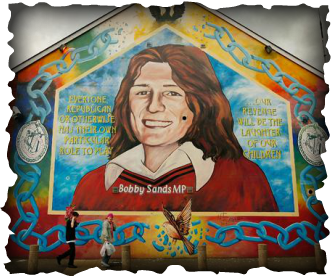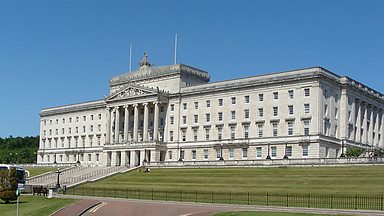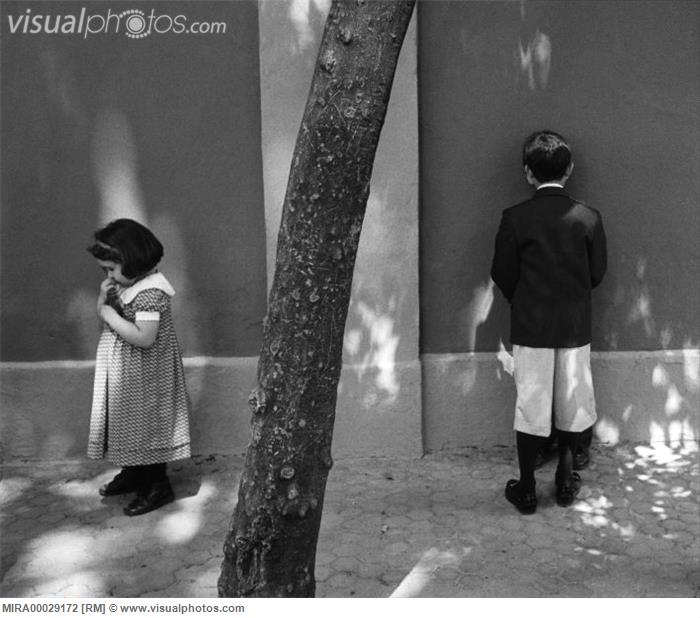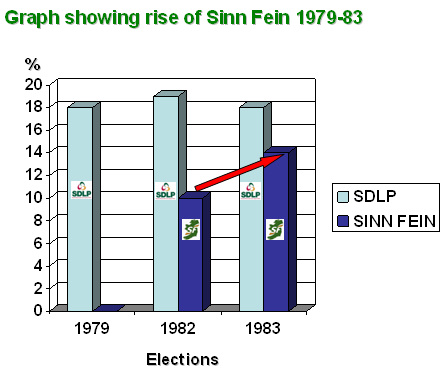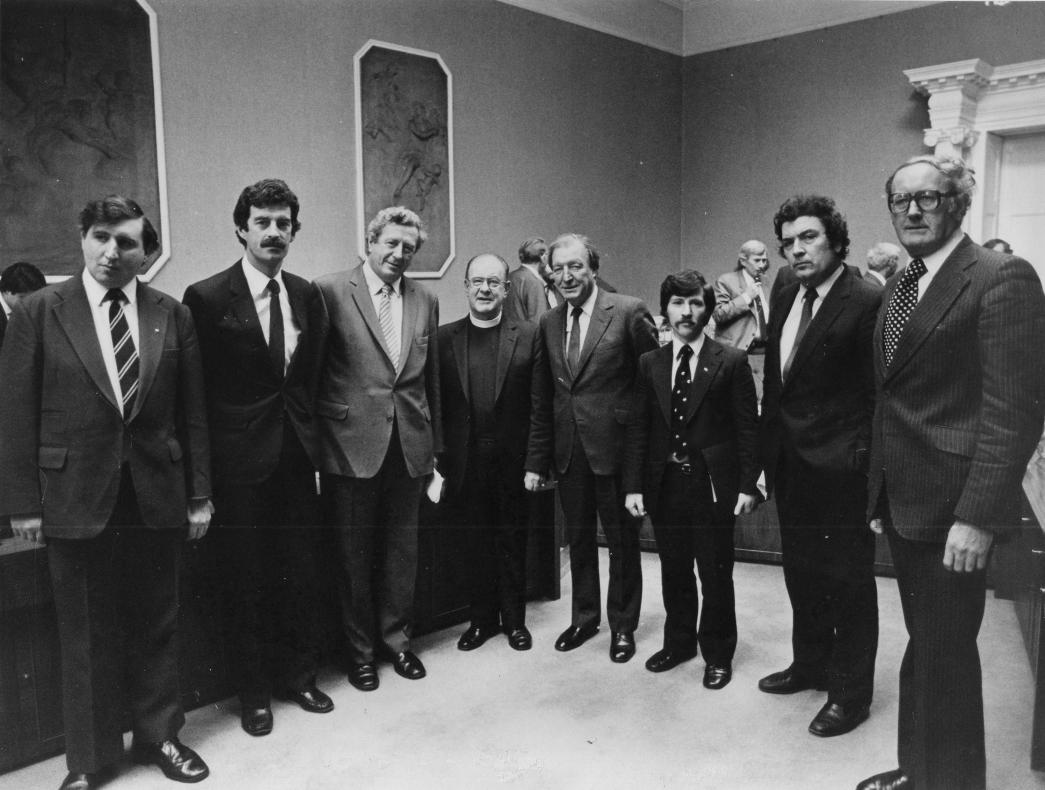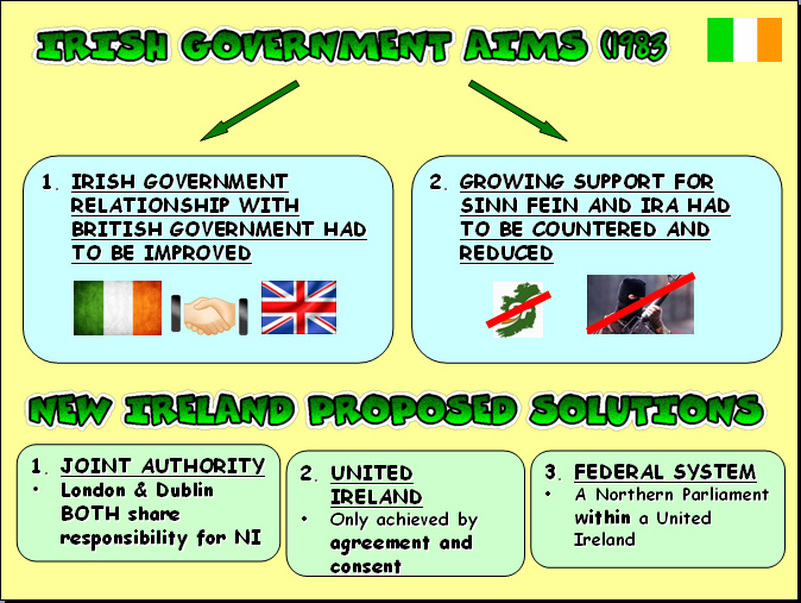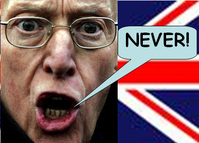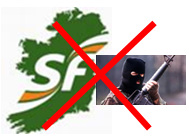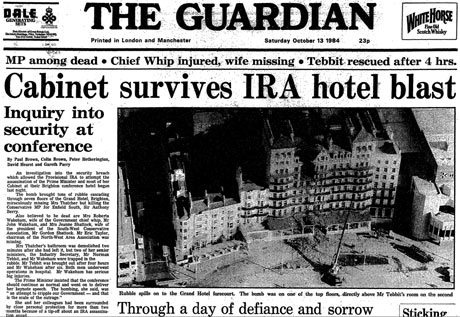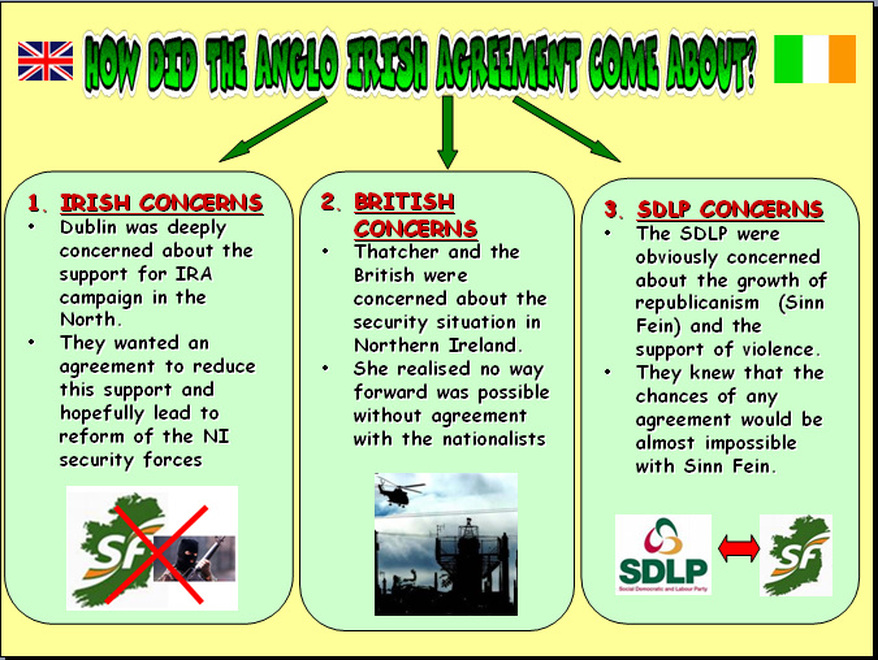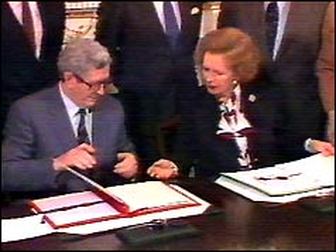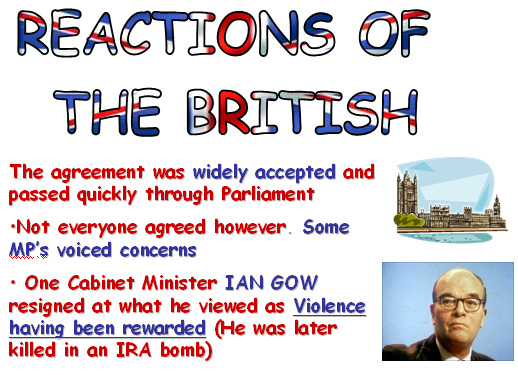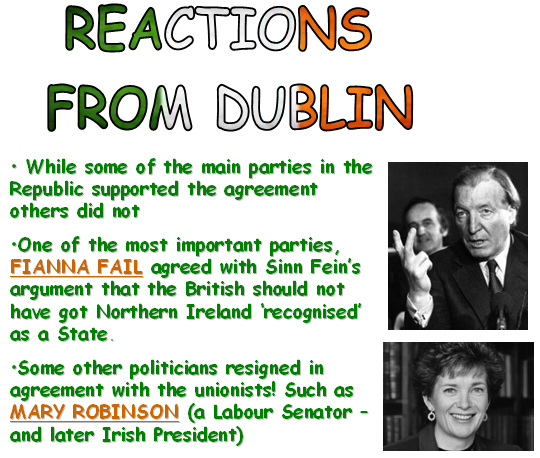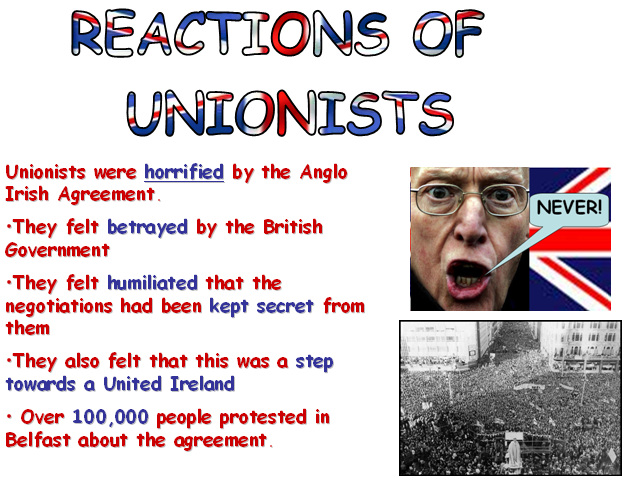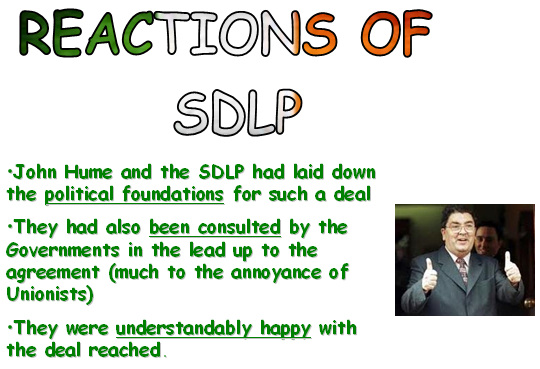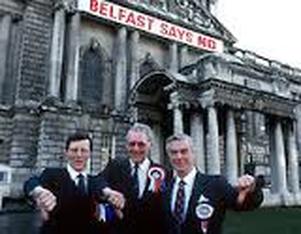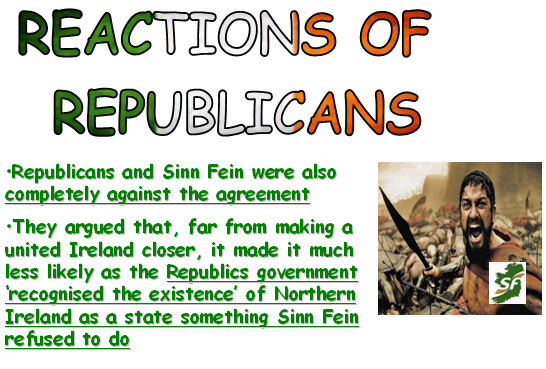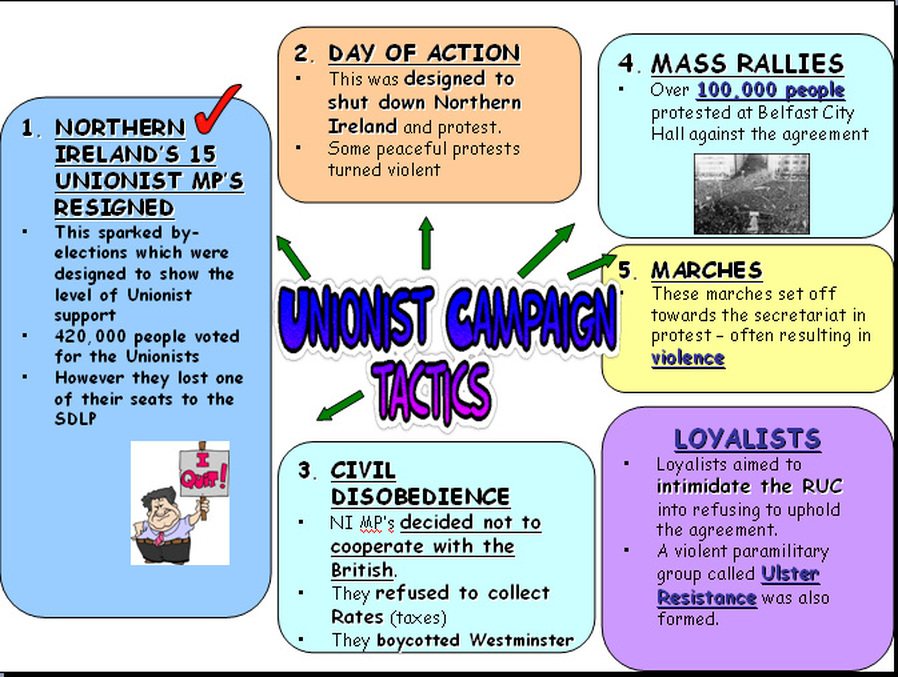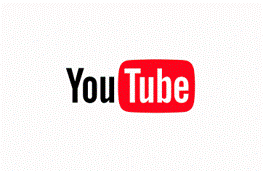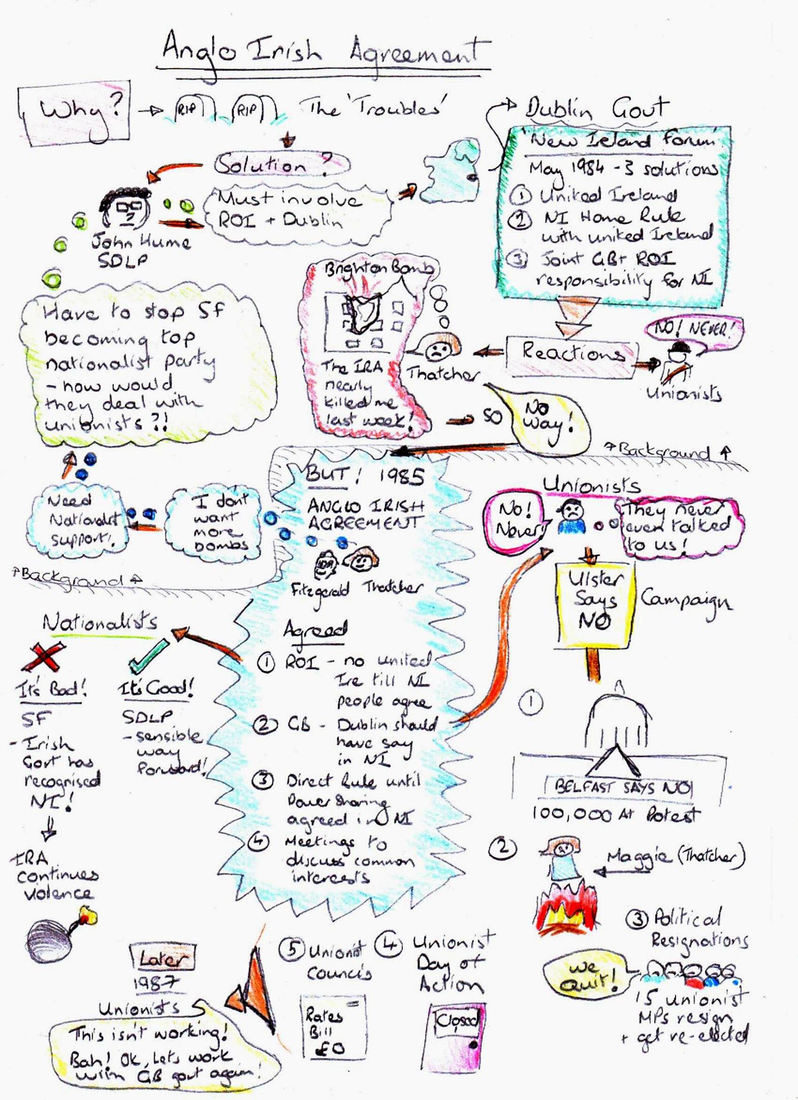|
The big winner from the Hunger Strike of 1981 was the Sinn Fein party. They were the harder line Republican party with a goal of a united Ireland. They were also closely associated with the IRA. They were the party which would form the ballot box side of Republican politics.
WHAT HAPPENED AFTER 1981?
WHAT WAS ROLLING DEVOLUTION?
DID IT WORK? Rolling Devolution had major problems from the beginning:
|
|
WAS IT IMPORTANT?
The Rolling Devolution trial was extremely important in one area. The ELECTIONS.
The Rolling Devolution trial was extremely important in one area. The ELECTIONS.
- It were the 1st contest Sinn Fein had taken part in elections in years.
- The results showed them doing remarkably well, gaining 5 seats and coming close in a few.
- The SDLP meanwhile were disappointed in only gaining 14 seats.
- This process continued in the 1983 General election with Sinn Fein moving even closer to the SDLP in electoral terms and Gerry Adams winning Gerry Fits seat in Parliament.
- This clearly illustrated to 1) The British Government 2) The SDLP 3) Dublin and 4) The Unionists that Sinn Fein were a credible and growing presence.
|
The SDLP were deeply worried about the steady challenge of Sinn Fein. This could see moderate nationalism gradually wiped out (and with it the chance of an agreed settlement)
They decided to establish a NEW IRELAND FORUM WHAT WAS THE NEW IRELAND FORUM? This was simply an open forum to discuss possible options to resolve the conflict in the North and provide long term solutions. Hume wanted the Irish Government to realise 2 things:
|
The New Ireland Forum faced a number of built in problems which weakened its influence considerably.
3. THE BRIGHTON BOMBThe Republic's hope of re establishing relations with London and of them accepting any of the proposals was ruined by the IRA Brighton bomb. This killed 3 people and very nearly killed British Prime Minister, Margaret Thatcher.
THE SIGNS OF ANY FORM OF AGREEMENT OR COMPROMISE LOOKED DIM |
As you can see, the prospects for any agreement looked extremely poor in the mid 1980's. Yet, in 1985, both Governments in the Republic of Ireland and the United Kingdom agreed to sign a landmark document called the ANGLO IRISH AGREEMENT.
- It was signed only between the 2 governments NOT the Northern Ireland Political parties.
- It was also highly controversial at the time and deeply unpopular with Unionists.
What was in the Anglo Irish Agreement?...
For the Irish Government |
|
For the British Government |
|
The agreement was greeted in London and Dublin with enthusiasm. However in Northern Ireland it was highly controversial and produced mixed reactions
Unionists were outraged, upset and angry about the Anglo Irish agreement but they were also absolutely isolated in terms of support. They could not depend on British support as they were part of the agreement and those others who hated the agreement were Sinn Fein and Fianna Fail - who the Unionists obviously despised. They set about a number of actions to try and demonstrate their fury and anger to the world.
The Unionist campaign against the Agreement was doomed from the start.
- The British and Irish Governments had made the agreement over their heads. They had also not created any institutions, like an Assembly, which the Unionists could bring down by refusing to join.
- Embarrassingly, the Unionist protests mirrored nationalist and Republican tactics. This included Civil disobedience, marching, rioting and refusing to go to Parliament.
- Their absence at Parliament was barely noticed as they were only a small part (14 MP's) out of 650
- Their refusal to collect rates was also hardly noticed as councils had very little powers.
- They had even managed to lose a Parliamentary seat in the protest
- The by elections the Unionists called proved one thing - that the agreement was actually already working in one of its goals. The SDLP increased their support and saw Sinn Fein's decline - a result the SDLP and Irish and British Governments were aiming for.
- Unionists were forced to concede defeat and talk to the British Government in 1987
- The Anglo Irish Agreement, although not liked, was also the basis for the Good Friday Agreement through which Northern Ireland is run today through agreed Power sharing.
|
|
|
|
|
|
|
|
|


